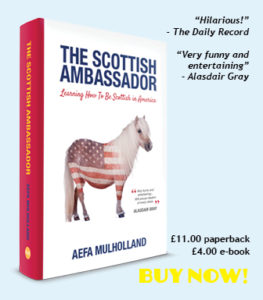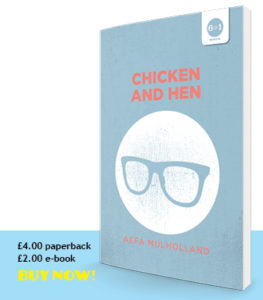Notes from an afternoon in Salem, Oregon, during which I have a discussion about sporrans — Scottish manbags/kilt accessories — with William and Cheryl Duncan of the Kilt and Thistle Shoppe.
“What can be turned into a sporran?” I enquire.
With enthusiasm, Cheryl lists off what kinds of creatures can be snatched from rural idylls, nipped, tucked and made into a sporran. Badgers seem popular. As do muskrats, arctic foxes and skunks. Cheryl has a definite tone of regret when she tells me that she and William are unable to import arctic seal sporrans into the U.S. from Canada. I make what I hope looks like a wee sympathetic face, but I am slightly shocked. I had no idea what was being gussied up into sartorial statements in my country’s name.
Oregon, the ninth largest U.S. state, has the nickname of The Beaver State. However, there are no beaver sporrans on show here. This is disappointing. Although, presumably not for the resident beaver population.
William breaks into my contemplation. He gesticulates at the furry faces in the case below.
“These are called mask sporrans. Historically speaking, sporrans were made from the animals found by the regiments. The regiments are where a lot of Highland apparel comes from. For instance the Blackwatch Regiment wore a bit of bear fur to signify that they’d spent time in North America, and used badgers, which were plentiful in these parts, for sporrans.”
He continues, “Mask or head sporrans are a lot more formal.” William looks down at the row of glassy-eyed faces, “and prettier.”
I look at the taxidermied beastie heads between us.
“Which are the most popular?”
“The skunk,” he points at its wee squished face under the glass, “and the fox.” William pauses and smiles slightly. “It comes as this fox and as the arctic fox.” The white fox’s fur shines like fresh snow under the fake yellow of the shop lights. It looks pure and vulnerable.
I continue gazing at the sporrans. I have to ask. I ask William if I can see one. He takes a dashing silvery-black muskrat off the wall. I take the gussied up rodent. It’s the softest creature I have ever picked up. It reminds me of my Scottish granny’s fox stole that my brothers and I used to terrify my sister with. I pat it and its beady eyes look up at me, gleaming with reflections of the fluorescent strips above. Transformed from a happy, flea-bitten, aquatic rodent to this. This probably wasn’t mentioned to young muskrats as a potential career option.
“It’s one of the few things in a man’s wardrobe that he can have as an accessory,” says William, bringing my attention back to the sporran in hand. “They use the same frame as for the badger,” William tells me. “The badger is a similar size to this. The Argyle and Sutherland Regiment has a badger head with six tassels. It’s quite an ornate piece of gear. They’re quite pretty.”
Once again, I re-evaluate the uses of the badger as a style statement.
I glance down and pick up a catalogue with yet more sporrans pictured inside. The leaflet lists “Exotic Fish Leather Sporrans.”
“Fish leather?” I squeak dubiously. I am amazed anew. I think I may often be amazed on this journey.
William takes the muskrat and places it carefully back up on the wall. He points at some un-furry sporrans in the next display case and tells me,
“These ones are made with fish leather.”
“It’s an extremely colourful leather that takes pigment very well,” he informs me. “It comes in red, green and blue.”
“But what’s fishy about it? Is it really made from fish?”
It seems it is. Is there no creature we Scots won’t turn into an accessory? Who knew us Scots were so practical?
Online, a website on Sea Leather Wear which explains the 30-day “chemical and mechanical process” fish skin goes through before a “flesher” removes “any remaining yuck.” It really says this. “Yuck” is an official fish tanning term it appears. Despite once spending a summer working in a fishing village in the Highlands, I was not aware of this. The site also tells me that fish leather is the second strongest leather known to man. “Three strip of certain fish,” the site states confidently, “half inches wide, braided together, can pull automobile.”





Comments are closed.